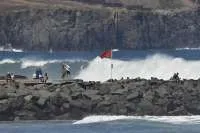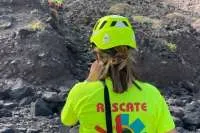Health authorities warn of rising skin cancer rates in the Canary Islands
- 12-04-2025
- National
- Ministry of Health
The Ministry of Health for the Canary Islands have issued a warning over the increasing incidence of skin cancer, particularly in the province of Santa Cruz de Tenerife, where melanoma has become the sixth most commonly diagnosed tumour.
According to the latest figures from the Cancer Observatory, a total of 579 cases were reported in 2024. In response, the Spanish Association Against Cancer (AECC) has launched its second island-wide Skin Cancer Prevention Campaign.
David Cova, Vice President of the AECC, highlighted the urgency of the issue during the campaign’s presentation. He noted that between 20 and 25% of those receiving AECC support are affected by skin cancer. “The battle must be fought through prevention and research,” Cova said. “It’s one of the cancers with a very high survival rate if detected early.”
The campaign will travel through all 31 municipalities of Tenerife, aiming to educate the public on the dangers of unprotected sun exposure and the importance of preventative care. Juan Manuel Acosta, Island Councillor for Education in Prevention, reminded residents that while the region enjoys a privileged climate with abundant sunshine, this comes with risks. “Protecting yourself from the sun is not an exaggeration; it’s an act of responsibility,” he said. “Looking after ourselves is also looking after those we love.”
The campaign has received strong support from the professional community. Manuel Ángel Galván, President of the College of Pharmacists of Santa Cruz de Tenerife, praised the initiative as a successful example of collaboration between the AECC and pharmacists. He reaffirmed the campaign’s mission to raise awareness about early detection and the role of pharmacies in community health education.
The warning comes as the Canary Islands record the highest levels of ultraviolet (UV) radiation in Europe, up to three times greater than the maximum levels seen on mainland Spain. This, coupled with the prevalence of fair-skinned individuals (skin phototype II), places the local population at a significantly increased risk of developing skin lesions.
Worryingly, surveys conducted during the campaign revealed that only 45% of respondents use daily sun protection. While 80% reported using high SPF (50+), only 57% apply it correctly, and just 18% reapply it as often as recommended.
Since the campaign began, 59 people have been referred to primary care for lesions suspected to be actinic keratosis, a precancerous condition. Of those, 36 have already been assessed by a GP, and 25 cases were confirmed. Twenty-one patients have been referred to hospital dermatology departments, two for minor surgery, while another two remain under treatment and monitoring by their GP. Additionally, four individuals have been diagnosed with basal cell carcinoma, a form of skin cancer.
Over the next seven months, the campaign will set up information tents in busy public areas such as plazas, promenades, and other high-traffic zones, where pharmacists, GPs, and dermatologists will offer personalised advice on sun protection and avoidance. The campaign also seeks to remind residents that sun damage can occur even on cloudy days.
Other articles that may interest you...
Trending
Most Read Articles
Featured Videos
A Vision of Elvis Tenerife Promo
- 10-05-2025
TEAs 2025 Highlights
- 17-11-2025


























































